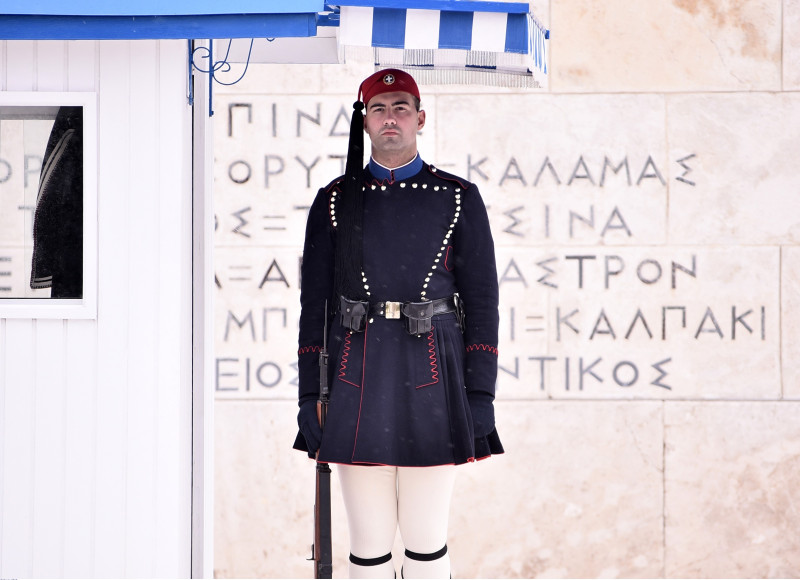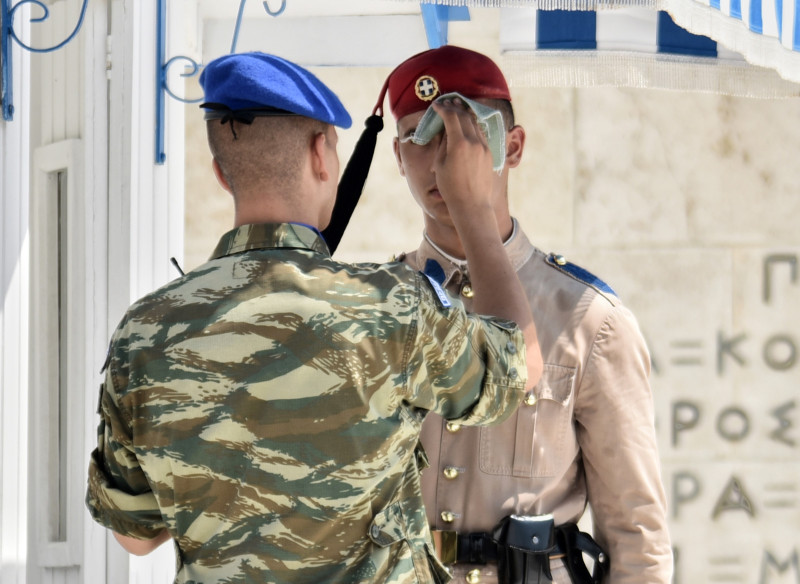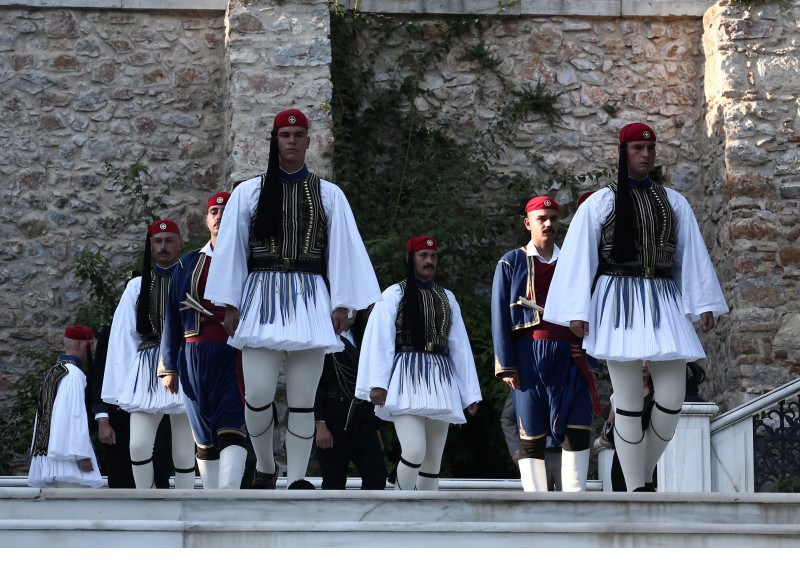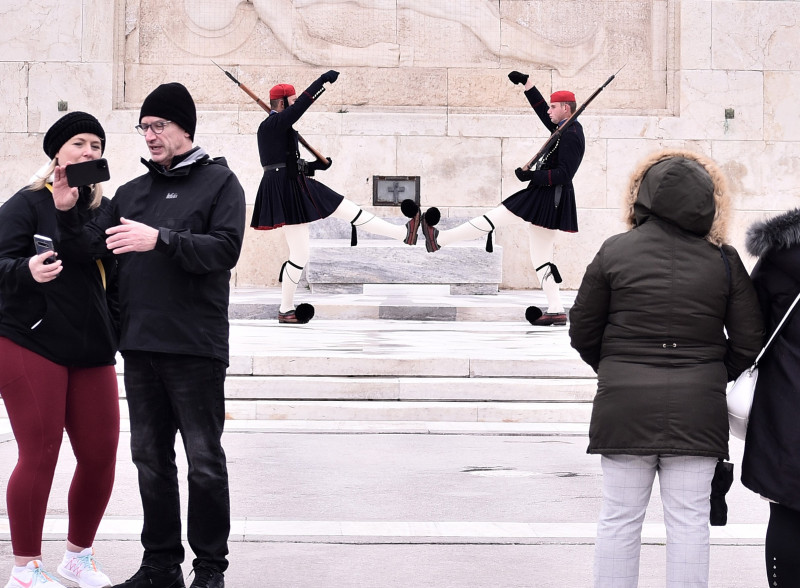The main feature of the uniform is the belt, which indicates the “well-belted” fighter (eu – belted).
The President of the Republic, Katerina Sakellaropoulou, visited the Presidential Guard today, on the occasion of the celebration of the 154th anniversary of its establishment.
From “Agema” to “Presidential Guard”
The long history of the Presidential Guard begins on December 12, 1868, with the formation of a combat and at the same time ceremonial part of the permanent Army, called “Agema”. The purpose of its creation was to provide excellent military training to those distinguished for their military virtue, so that they could be a training model for the rest of the Army.
After the Balkan Wars, in 1914, it was renamed “Palace Guard”. In 1929, the year the construction of the Monument to the Unknown Soldier began, the Evzones company under the name “Guard Company of the President of the Republic” took over its guarding.
Over the years and with the changes in the state, the renamings followed one another: “Royal Guard Company” (1940), “Unknown Soldier’s Honor Guard” (1941), “Flag Guard” (1942), “Royal Guard » (1946). However, the mission regarding the honorable guarding of the Monument to the Unknown Soldier and the Palaces remained unchanged.
Since 1974, with the restoration of the Republic in Greece, it is now definitively called the “Presidential Guard”, has a purely ceremonial character and is subordinate to the Military Office of the Presidency of the Republic.
Mission – Duties
The Euzones come from volunteer soldiers of the Infantry, and are selected through a painstaking process. As sleepless guards, they pay tribute to the Monument to the Unknown Soldier around the clock, in all weather conditions, and honorably guard the Presidential Palace and the gate of the Presidential Guard camp.
In addition, they attribute values to S.A. the President of the Republic, to foreign heads of state, as well as to foreign ambassadors when presenting their credentials to the President.
Part of the duties of the Presidential Guard is also the raising and lowering of the Greek Flag on the Holy Rock of the Acropolis, on Sundays and public holidays, as well as the participation of units of Evzones in the celebration of national anniversaries and in other solemn events at home and abroad, especially during the national anniversary of March 25.
Every Sunday, at 11:00 a.m., a parade of Evzones marches from the Presidential Guard camp to the Monument to the Unknown Soldier, where the official changing of the guard ceremony takes place.
The Evzonian Uniform
The Euzone uniform, with its long history, is part of our national identity and is inextricably linked to the modern history of Greece. Since the establishment of the Greek state, the euzonian uniform of the chieftains and fighters who spearheaded the nation’s liberation struggles against the Ottomans, during the period of the Greek Revolution, has been established as the official national dress.
The uniform of the officers of the Presidential Guard shows slight differences compared to the uniform of the Evzones soldiers. However, their basic characteristics remain common, as well as their symbolism. It is worth noting that the uniforms are entirely handmade and their particularly costly and time-consuming construction requires a lot of experience.
The main feature of the uniform is the zonewhich denotes the “well-girded” fighter.
THE dress, made of 30 meters of white fabric, consists of 400 pleats, that is, as many as during the years of Turkish rule. Its white color, as well as the white color of the host (shirt), symbolizes the purity of the struggles for national independence.
The fermeli (vest) is the most difficult part in the process of making the costume and is embroidered with white or gold-plated threads in designs of great traditional and folkloric value. The red farion (hat) with the coat of arms symbolizes the sacrifices and blood shed by the fighters in the nation’s liberation struggles, while the black silk tassel symbolizes tears and mourning. The blue and white silk fringes on the uniform of the Evzones are a symbol of the Greek Flag.
Finally, one of the strongest symbols of Euzonian costume is the tsarukhi (shoe) which is entirely handmade, made of hard red leather. A pair of tsaruhia weighs about 3 kg, as they have 120 studs and horseshoes on the bottom. According to tradition, blades, useful for hand-to-hand combat, were hidden in the large black tassel of the tsaruchi.
In addition to the official uniform, the Presidential Guard also has the following uniforms:
• The winter blue “dulama” – Macedonian Struggle Uniform. It is carried daily by the Evzones during the winter season.
• The summer khaki “dulama” – Uniform of the Balkan Wars. It is carried daily by the Evzones during the summer season.
• The uniform of the Cretans. It is worn in parades and official processions.
In addition, the Presidential Guard, custodian of history and culture, preserves in the archive of its national traditional costumes, the Pontic uniform, the traditional costume of the Bracophorus of the Aegean and the Thracian costume. These are brought by the Evzones on a case-by-case basis, on days of remembrance and honor.
Location
The camp of the Presidential Guard, since its foundation, is located on Irodou Attikou Street (no. 2), near the Presidential Palace and honorably bears the name of the Souliotis commander and hero of the Greek Revolution of 1821, Georgios Tzavelas.
Visits
The Presidential Guard is not open to the general public, however it accepts organized visits to schools, higher educational institutions, as well as cultural and social clubs, upon request to the email address [email protected].
Read the News today and get the latest news.
Follow Skai.gr on Google News and be the first to know all the news.
I have worked as a journalist for over 10 years, and my work has been featured on many different news websites. I am also an author, and my work has been published in several books. I specialize in opinion writing, and I often write about current events and controversial topics. I am a very well-rounded writer, and I have a lot of experience in different areas of journalism. I am a very hard worker, and I am always willing to put in the extra effort to get the job done.














